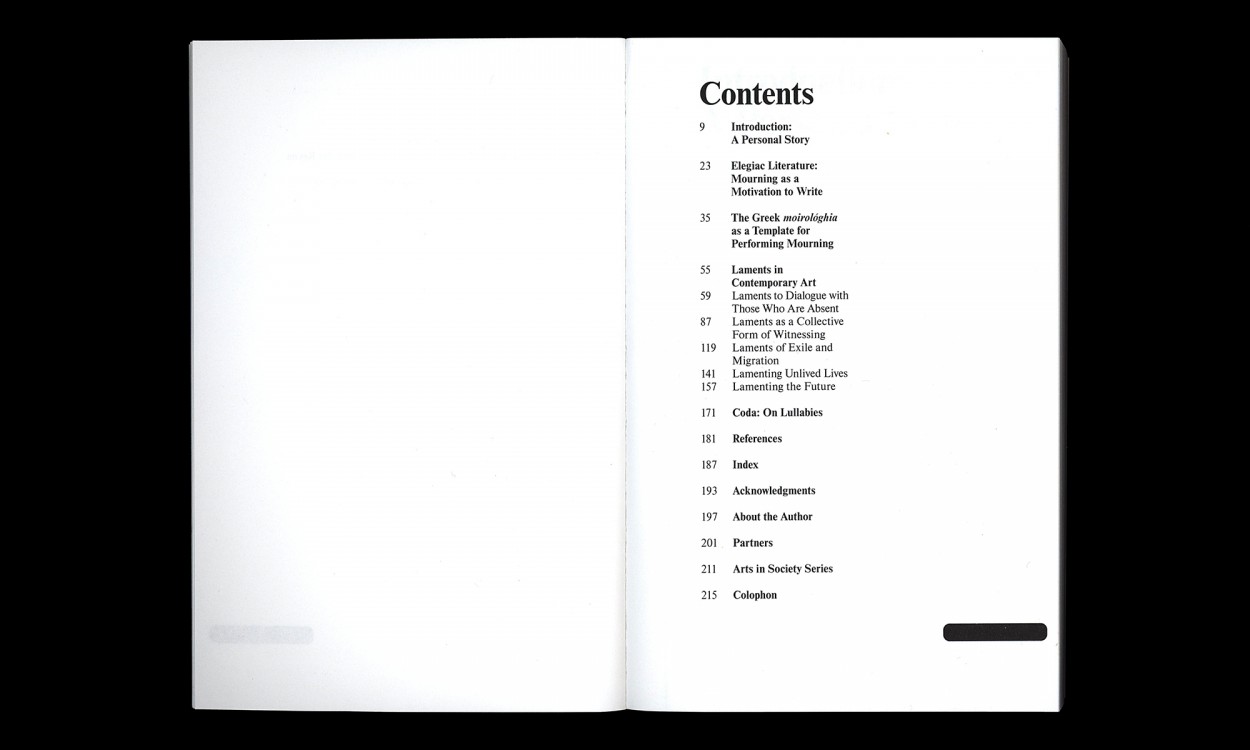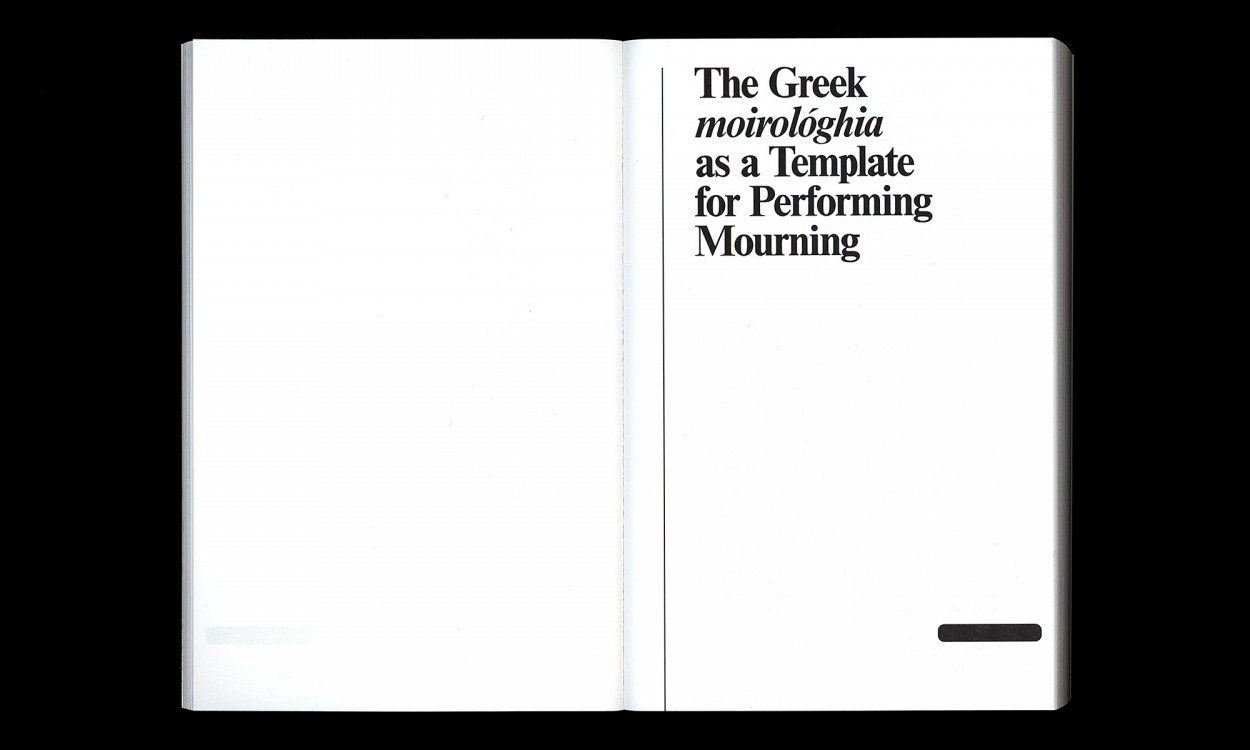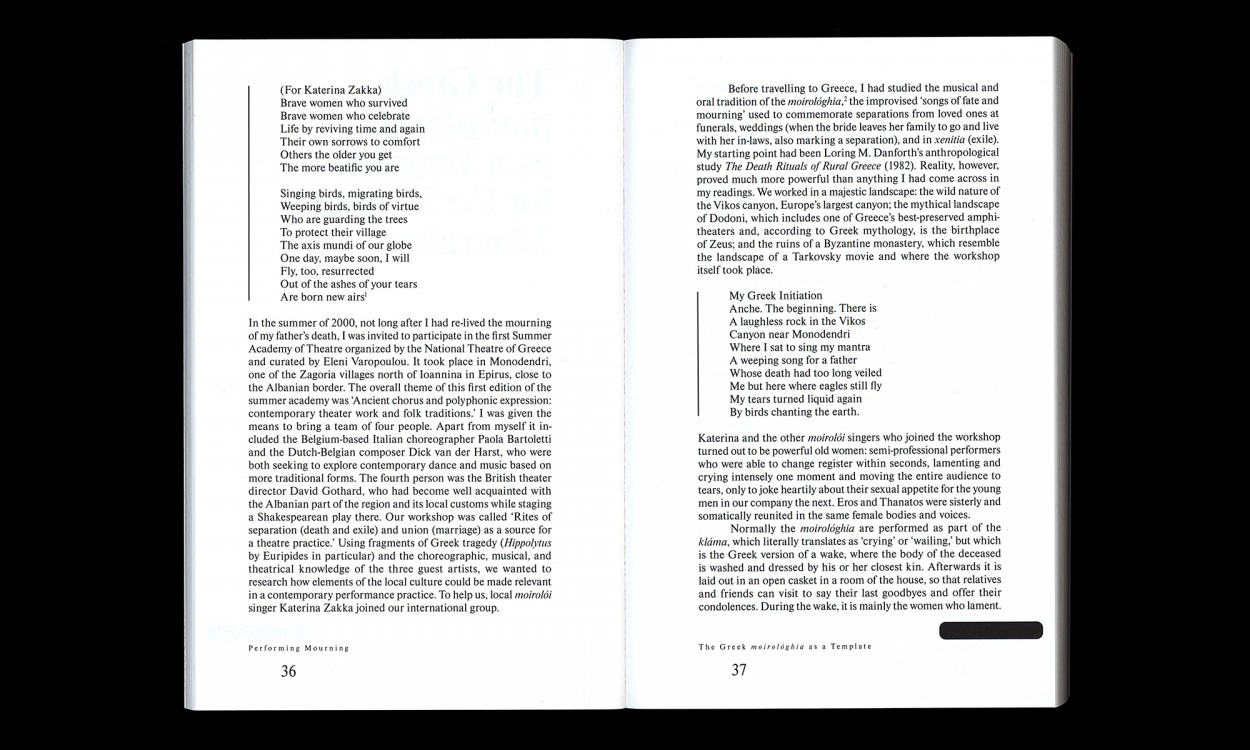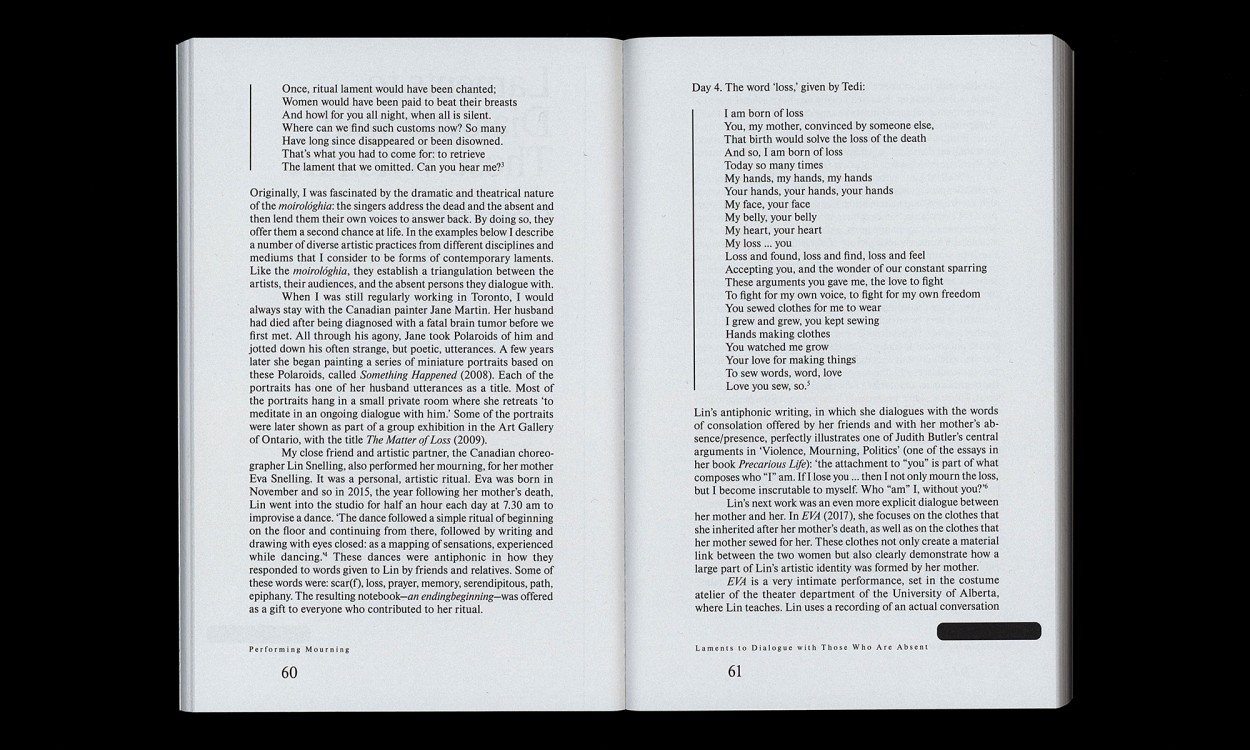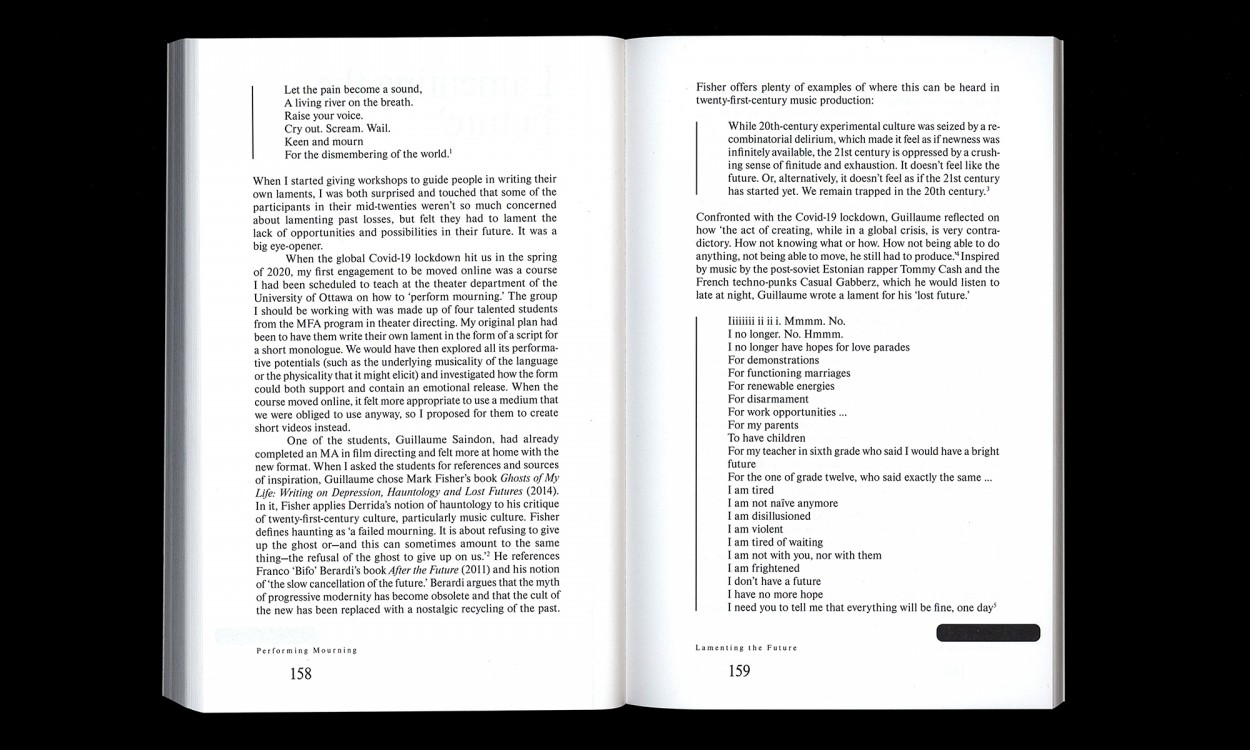Performing Mourning
Laments in Contemporary Art
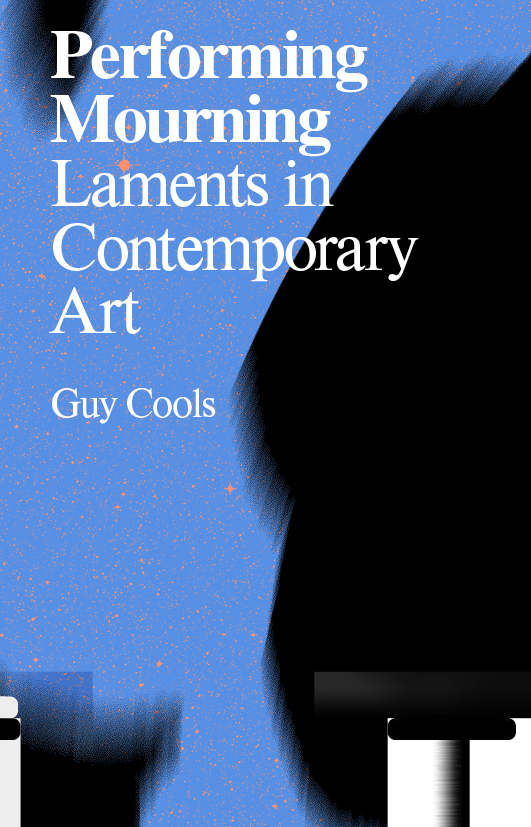
Author: Guy Cools
Design: Metahaven
Series: Antennae-Arts in Society
May 2021, Valiz | pb | 224 pp. | 21 x 13,5 cm (h x w) | English | ISBN 978-94-92095-98-5 | € 22,50
Guy Cools is a dance dramaturg. He has worked as a dance critic and curator. He now dedicates himself to production dramaturgy and research/writing. He regularly lectures and publishes internationally (In-between Dance Cultures, Valiz 2015; Imaginative Bodies, Valiz 2016; The Ethics of Art (co-ed.), Valiz, 2014, The Choreopolitics of Alain Platel’s les ballets C de la B, Bloomsbury 2019 (co-ed.)
An online video channel is available with the book. The works featured in the book can be viewed on this channel.
Related events
Click here to watch a recording of Guy Cools' lecture and performance Lamenting the Future: Mourning as a source of activism at H401, Amsterdam (3 November 2021)
Press
- Click here to read the review of Performing Mourning in Taylor & Francis (Volume 28, 2023)
Each person’s grief is as unique as their fingerprint. But what everyone has in common is that no matter how they grieve, they share a need for their grief to be witnessed.
The pandemic has once again made us more aware of the fragility of life and the importance of being able to properly mourn the dead. Dramaturg Guy Cools has been researching laments and other rituals of mourning. He is particularly interested in how the emotions of loss need to be externalized. The laments are a formal device, used in many cultures to express and contain the emotions of grief.
In a poetic, meandering, personal way Cools explores cultural habits, traditions, rituals, and artists’ performances. His narrative looks into many forms of laments: literary, anthropological, philosophical, and in contemporary art practices. The latter part delves into artistic strategies to address or embody mourning: dialogical strategies that deal with personal losses; collective mourning rituals and how they invite communities to witness these losses; contemporary examples of laments that are not only used to dialogue with the dead but also to communicate with loved ones who are absent because of migration or exile; a very specific form of mourning that occurs when we grieve for the unrealized potential of a child’s unlived life, including that of an unborn child. And finally, the very recent phenomenon of lamenting not just the losses of the past, but also the loss of a future.
{snippet eindcol}

